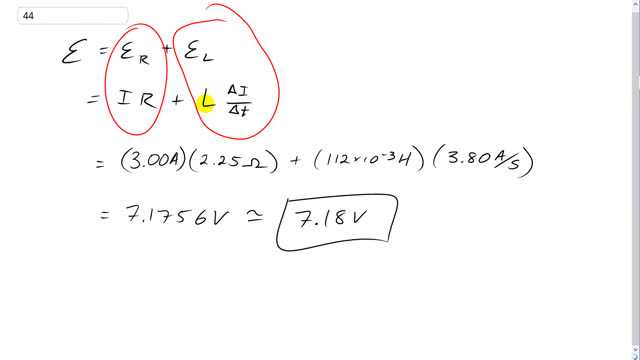
A coil has - resistance and 112-mH inductance. If the current is 3.00 A and is increasing at a rate of 3.80 A/s, what is the potential difference across the coil at this moment?

In order to watch this solution you need to have a subscription.
Why don't you subtract the potential due to the inductance of the coil? I thought the minus sign in the E = -L (dI/dt) formula was meant to indicate that the voltage would be in the opposite direction following Lenz's law (current increasing > flux increasing > induced current needs to decrease flux to compensate > current flows in other direction > voltage drop in other direction). What am I missing?
Hi julia.wolfe, thanks for the question. What's important to notice is that the sign of the potential difference will be the same across the resistor as it is across the inductor. In both cases, the circuit element causes a potential drop. (I say "circuit element" since it's OK to model this circuit as containing a single resistor and a single inductor connected by zero-resistance wires). Recall that when using Kirchoff's Laws to analyze a circuit, you make the potential across a resistor negative (it's a potential drop, in other words) when traversing the resistor in the same direction as the current. Because the inductor opposes the change in current, as you correctly mentioned, this inductor also causes a potential drop to oppose the change (note that, contrary to what you mentioned, the current does not end up flowing in the other direction. Rather, it's increase is opposed, and the inductor would disappear once the current stops changing). It would be fine to call both potential drops negative if you wish, but the question isn't specific about direction, so calling both positive is fine when answering a question asking for a "potential difference".
Hope that helps,
Mr. Dychko